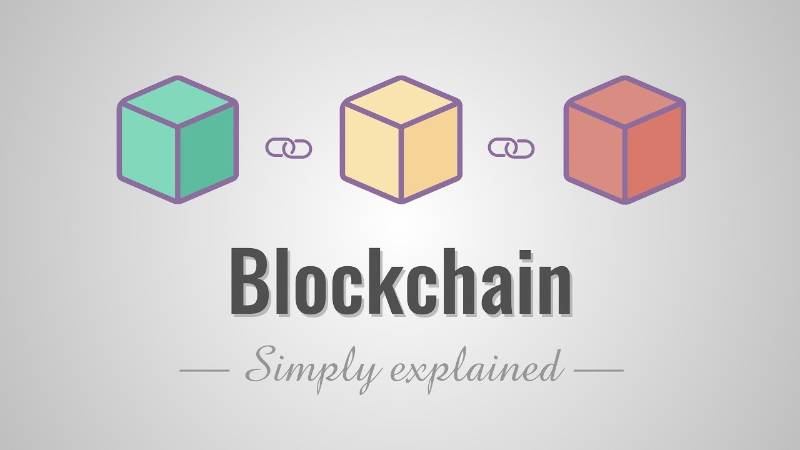1. Introduction & Overview
What is Blockchain?

Blockchain is a distributed, immutable ledger that records transactions in a chain of blocks, secured by cryptographic hashes. Each block references the previous block, forming a tamper-resistant chain. In the context of cryptoblockcoins (a hypothetical cryptocurrency), blockchain ensures transparent, secure, and decentralized record-keeping.
History & Background
- 1991: Stuart Haber & W. Scott Stornetta proposed digital time-stamping.
- 2008: Satoshi Nakamoto introduced blockchain as the foundation for Bitcoin.
- 2010s–now: Blockchain expanded into finance, supply chain, healthcare, NFTs, and beyond.
Relevance in Cryptoblockcoins
- Provides trust without intermediaries.
- Ensures transaction integrity and immutability.
- Supports peer-to-peer digital currency transfers.
- Enables smart contracts for automated agreements.
2. Core Concepts & Terminology
Key Terms
| Term | Meaning |
|---|---|
| Block | A data container with transactions, hash, and metadata. |
| Hash | Cryptographic fingerprint of data. |
| Node | A computer in the blockchain network. |
| Consensus | Mechanism to agree on a single version of truth (e.g., Proof of Work). |
| Miner/Validator | Entity verifying transactions and creating blocks. |
| Wallet | Digital key pair used to store/send cryptoblockcoins. |
| Smart Contract | Self-executing contract with predefined rules. |
Lifecycle in Cryptoblockcoins
- Transaction Creation → User sends cryptoblockcoins via wallet.
- Broadcast → Transaction is shared with network nodes.
- Validation → Miners/validators verify authenticity.
- Block Creation → Transactions grouped into a block.
- Consensus → Network agrees on block validity.
- Chain Update → New block added permanently.
- Confirmation → Transaction considered final after multiple confirmations.
3. Architecture & How It Works
Components
- Application Layer: Wallets, DApps, smart contracts.
- Consensus Layer: PoW, PoS, or hybrid protocols.
- Network Layer: Peer-to-peer communication.
- Data Layer: Block storage with cryptographic links.
Internal Workflow
- User submits transaction.
- Transaction validated (digital signatures, balances).
- Added to a mempool (waiting list).
- Miner/validator forms block, solves consensus puzzle.
- Block linked to previous block via hash.
- Ledger updated across all nodes.
Architecture Diagram (Text Form)
+---------------------------------------------------+
| Application Layer |
| (Wallets, Cryptoblockcoin apps, Smart contracts) |
+---------------------------------------------------+
| Consensus Layer |
| (Proof of Work / Proof of Stake / Hybrid methods) |
+---------------------------------------------------+
| Network Layer |
| (P2P nodes, Gossip protocol, Transaction flow) |
+---------------------------------------------------+
| Data Layer |
| (Blocks, Hashes, Merkle Trees, Immutable chain) |
+---------------------------------------------------+
Integration with CI/CD or Cloud
- Dockerized Blockchain Nodes for dev/test environments.
- CI/CD pipelines can automate deployment of smart contracts.
- Cloud storage & monitoring for scalability (AWS, Azure, GCP).
4. Installation & Getting Started
Prerequisites
- OS: Linux / macOS / Windows
- Tools: Node.js, Docker, Git, Python
- Libraries: Web3.js or Ethers.js
Step-by-Step Setup (Beginner)
# 1. Install Node.js
sudo apt install nodejs npm
# 2. Install Truffle (Blockchain framework)
npm install -g truffle
# 3. Create project
mkdir cryptoblockcoin && cd cryptoblockcoin
truffle init
# 4. Start local blockchain with Ganache
npm install -g ganache-cli
ganache-cli
# 5. Deploy a sample smart contract
truffle migrate
5. Real-World Use Cases
Cryptoblockcoin Scenarios
- Peer-to-Peer Payments: Users send and receive cryptoblockcoins without banks.
- Mining Rewards: New coins distributed for validating blocks.
- Smart Contracts: Automated lending/borrowing in cryptoblockcoin DeFi.
- Tokenized Assets: Representing real estate or NFTs on cryptoblockcoin blockchain.
Industry-Specific Examples
- Banking: Faster cross-border settlements.
- Healthcare: Secure medical record sharing.
- Supply Chain: Tracking product authenticity.
6. Benefits & Limitations
Key Advantages
- Transparency & immutability
- Decentralized control
- Security via cryptography
- Faster settlement compared to traditional banking
Limitations
| Challenge | Description |
|---|---|
| Scalability | Slow TPS (transactions per second). |
| Energy Consumption | High in Proof of Work. |
| Regulation Uncertainty | Different legal frameworks globally. |
| Usability Barriers | Complex for non-technical users. |
7. Best Practices & Recommendations
- Security: Use strong key management (hardware wallets).
- Performance: Prefer Proof of Stake for efficiency.
- Maintenance: Regularly update nodes and software.
- Compliance: Align with KYC/AML regulations.
- Automation: Use CI/CD pipelines for smart contract deployment.
8. Comparison with Alternatives
| Feature | Blockchain | Centralized DB | Distributed DB |
|---|---|---|---|
| Immutability | ✅ Yes | ❌ No | Partial |
| Decentralization | ✅ Yes | ❌ No | Partial |
| Security | ✅ Strong | Medium | High |
| Cost | Medium | Low | Medium |
| Speed | Low–Medium | High | Medium |
When to Choose Blockchain:
- When trust, transparency, and immutability are essential.
- When multiple untrusted parties interact without a central authority.
9. Conclusion
Blockchain is the backbone of cryptoblockcoins, enabling secure, decentralized, and transparent digital transactions. While challenges like scalability and regulation exist, innovations like layer-2 scaling and green consensus algorithms are paving the way forward.
Future Trends
- Cross-chain interoperability
- Green blockchains (energy-efficient)
- Integration with AI and IoT
Next Steps
- Experiment with frameworks like Truffle, Hardhat, or Hyperledger.
- Explore Layer-2 solutions (e.g., Lightning Network, Polygon).
- Join blockchain communities to stay updated.
Official Docs & Communities
- Ethereum Docs
- Hyperledger
- Bitcoin.org Developer Guide